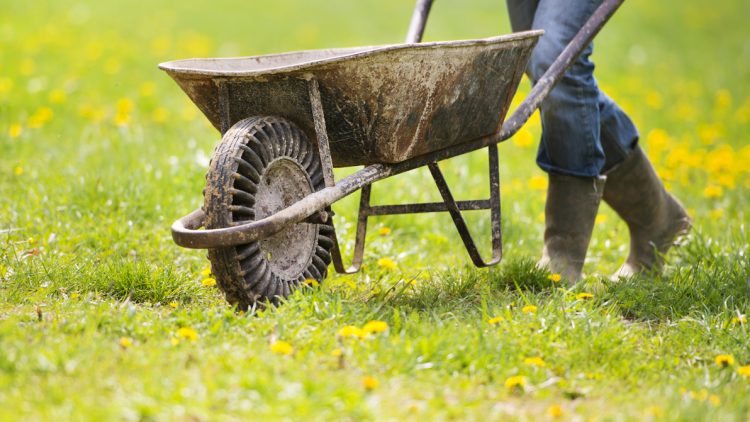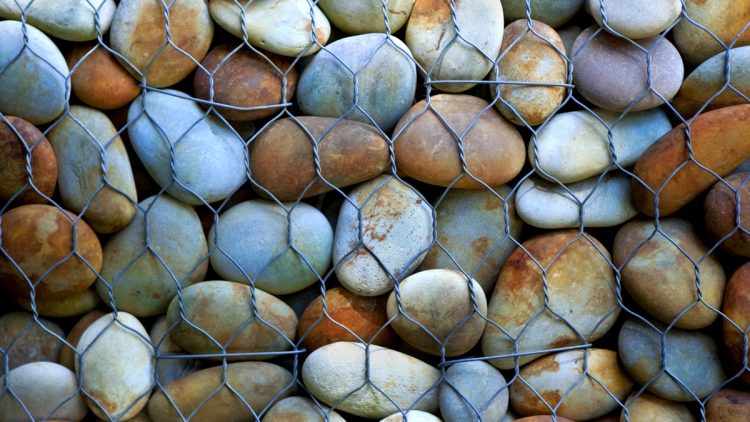Landscape rocks are natural or manufactured stones used in landscaping to enhance aesthetics, control erosion, and provide low-maintenance ground cover. They come in various sizes, colors, and textures to fit different design styles and functional needs.
🌿 Types of Landscape Rocks
🔹 Pea Gravel (1/4″ – 1/2″) – Small, rounded stones great for pathways, driveways, and drainage.
🔹 River Rock (1/2″ – 3″) – Smooth, multi-colored stones ideal for garden beds and water features.
🔹 Decomposed Granite (DG) – Crushed rock used for walkways, patios, and driveways.
🔹 Crushed Stone (1/2″ – 2″) – Angular rock for driveways, drainage, or decorative use.
🔹 Rip Rap (3″ – 12″) – Large rocks used for erosion control on slopes and drainage areas.
🔹 Boulders (12″+) – Large, decorative stones for accent features in landscaping.
🔹 Lava Rock – Lightweight, porous rock that retains heat, commonly used in desert landscapes.
🛠️ Benefits of Using Landscape Rocks
✔ Low Maintenance – No watering, mowing, or trimming needed.
✔ Erosion Control – Prevents soil erosion in heavy rains.
✔ Improved Drainage – Helps water flow properly in landscapes.
✔ Durability – Long-lasting and doesn’t degrade like mulch.
✔ Weed Prevention – Acts as a barrier when paired with landscape fabric.
📍 Best Uses in Landscaping
- Xeriscaping (low-water desert landscaping)
- Garden bed borders & pathways
- Dry river beds & drainage solutions
- Accent features with boulders
- Ground cover around trees & plants
in Scottsdale, AZ, the best landscape rocks should be heat-resistant, low-maintenance, and complement a desert-style landscape. Here are the top recommendations based on function and style:
🌵 Best Landscape Rocks for Scottsdale Yards
1️⃣ Decomposed Granite (DG) – Best for Walkways & Ground Cover
✅ Pros:
- Affordable and widely available in Phoenix.
- Compacts well for walkways, patios, and driveways.
- Allows water drainage while preventing dust.
❌ Cons:
- Can get hot under direct sun.
- Needs occasional replenishing to maintain color.
🔹 Best Use: Driveways, pathways, and ground cover.
2️⃣ Pea Gravel (1/4” – 1/2”) – Best for Pathways & Drainage
✅ Pros:
- Small, smooth, and comfortable to walk on.
- Excellent for drainage and decorative beds.
- Comes in beige, brown, and gray tones that match Phoenix desert landscapes.
❌ Cons:
- Can shift easily, requiring edging or stabilizing.
🔹 Best Use: Pathways, patios, around plants, and as a top layer over soil.
3️⃣ River Rock (1” – 3”) – Best for Dry River Beds & Decorative Areas
✅ Pros:
- Smooth, polished look with a mix of browns, grays, and tans.
- Great for dry river beds, drainage, and erosion control.
- Long-lasting and doesn’t break down like DG.
❌ Cons:
- More expensive than DG and pea gravel.
- Can trap heat and may need occasional repositioning.
🔹 Best Use: Dry river beds, decorative accents, and drainage areas.
4️⃣ Lava Rock – Best for Heat Reflection & Low-Maintenance
✅ Pros:
- Lightweight, porous, and great for desert landscapes.
- Retains less heat than solid rock, making it good for plant beds.
- Available in black, red, and brown colors.
❌ Cons:
- Sharp edges can make it uncomfortable for walking.
- Tends to blow away in strong winds without a border.
🔹 Best Use: Ground cover around cacti, succulents, and desert plants.
5️⃣ Crushed Granite or Crushed Rock – Best for Driveways & High-Traffic Areas
✅ Pros:
- More stable than pea gravel, doesn’t shift easily.
- Great for driveways and patios due to its compacting ability.
- Matches the natural desert aesthetic.
❌ Cons:
- Can be rough on bare feet.
- Needs occasional raking to maintain level.
🔹 Best Use: Driveways, pathways, and areas needing stable ground cover.
6️⃣ Boulders & Rip Rap – Best for Decorative Features & Erosion Control
✅ Pros:
- Adds a natural, rugged look to desert landscapes.
- Helps with erosion control on slopes and water runoff areas.
- Minimal maintenance needed.
❌ Cons:
- Expensive depending on size.
- Heavy to install, may require professional placement.
🔹 Best Use: Accent pieces, retaining walls, or stabilizing slopes.
🔥 Phoenix Landscape Rock Buying & Installation Tips
✅ Pick light-colored rocks (beige, tan, gray) to reduce heat absorption.
✅ Use landscape fabric under rocks to prevent weeds.
✅ Buy in bulk from local rock suppliers to save money.
✅ Layer different rock sizes for a natural desert look.
✅ Mix with drought-resistant plants (agave, cactus, yucca) for a true xeriscape design.
A&A Materials, Inc. specializes in decorative rock landscape materials in Scottsdale and surrounding areas, that make your property look its best year-round. Call us at 480-990-0557 with any questions or for more information.


